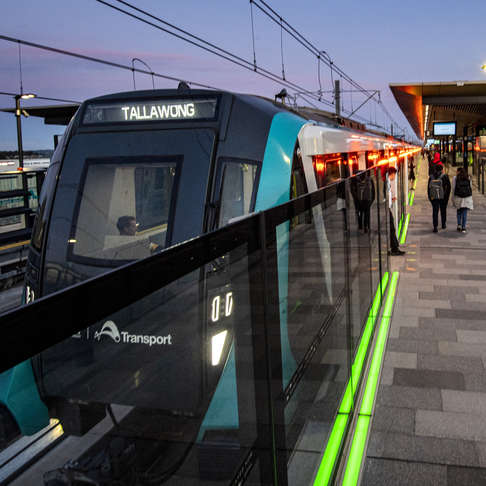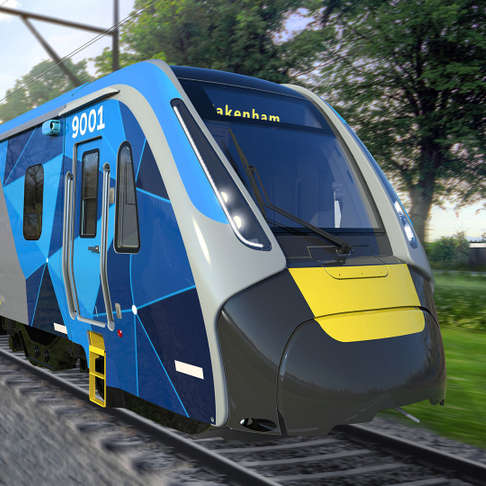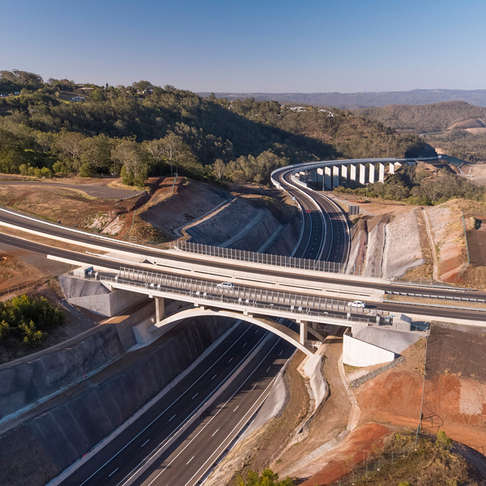Stage 1 of the Gold Coast Light Rail project consists of 14 vehicles and 16 stations servicing a 13 kilometre route between the Gold Coast University Hospital and Broadbeach; part of one of the fastest growing regions in Australia.
This is Queensland’s first light rail system and is considered more than just a transport project but also a city-building project to support sustainable development, reduce congestion and improve connectivity between major activity centres on the Gold Coast.
Plenary Group is part of the GoldLinQ consortium selected by the Queensland Government to design, build, finance, operate and maintain a light rail public transportation system.
Construction on Stage 1 commenced in early 2012 and the first passengers boarded the light rail in July 2014.
Trams have now carried more than 11 million passengers with Stage 1 averaging over 20,000 passengers per day.
Stage 2 consists of 7.3 kilometres of dual track and an additional four trams to connect the Gold Coast University Hospital light rail station to the Helensvale heavy rail station, creating a one-transfer journey between the Gold Coast and Brisbane.
Design features
The trams that service the route are Bombardier Flexity Gold Coast Trams that have been designed to travel at up to 70km/hr.
Standing 3.4 metres high, 2.65 metres wide and 43.5 metres long they are bi-directional with a cab at each end.
Designed for a passenger capacity of 309 people, the trams feature air conditioning, wheelchair and multipurpose areas and surfboard racks.
Innovations
The tendering of Stage 1 – during a time of significant financial market constraint following the 2008 global financial crisis necessitated innovation in the development of an efficient financial structure.
Plenary coordinated the group of exclusively foreign banks and Canadian export credit agency EDC on behalf of GoldLinQ. The outcome was a senior debt package that extended for the full term of the project, significantly mitigating risks associated with a refinance.
GoldLinQ also called for careful commercial and contractual structuring to ensure the delivery and operational model was robust enough to support a PPP financing structure. This was done in a way that still afforded significant flexibility to the State around operational models and future expansion of the network.
In 2015, the Queensland Government requested an Operator Franchise Initiated Modification process begin to initiate the procurement of Stage 2. Plenary coordinated and implemented an innovative financing structure with minimal refinancing risk that involved senior lenders (all of which were foreign banks), multiple State Contributions as well as domestic and international equity investors.
Stage 2 also required innovative structuring and contractual arrangements to ensure appropriate separation of Stage 1 (already in operations) during the construction phase of Stage 2, with both stages then combining into an integrated expanded network upon Stage 2 completion.
Extending the light rail will greatly improve livability and ease congestion while supporting economic growth in the area.
Local economic impacts
JOB CREATION
Some 390 new positions were directly engaged by GoldLinQ in the delivery of Stage 1, and 140 new ongoing jobs were required to run the light rail system.
Through works packages tendered out by GoldLinQ, Stage 1 created some 6,000 direct and indirect jobs for Queensland.
Stage 2 is expected to generate up to 1,000 direct and indirect jobs to the construction industry during the two-year construction period.
Similar to Stage 1, CPB Contractors are required to engage local workers and businesses for the entire project
URBAN RENEWAL
The project generated a number of social, environmental and economic benefits for the city including; reducing greenhouse gas emission by 114,000 tonnes over the first 10 years of operation, reducing the number of private vehicle trips by up to 10 per cent, and providing a frequent, affordable and reliable alternative to car travel, contributing to a fully-integrated public transport system for the Gold Coast.
Stage 2 will have the capacity to carry 3,000 passengers per hour and will supply an additional 1400 spaces at two Park and Ride facilities.


